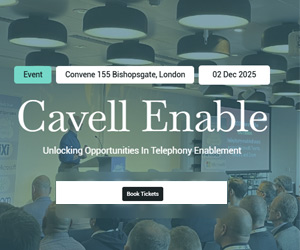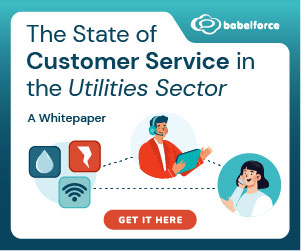Call avoidance is a common problem in the contact centre world and, if we’re being honest, an understandable one.
If an agent spends the day answering the phone to angry customers, fielding countless complaints, and acting as the first line of defense when something goes wrong, can you really blame them for being tempted to avoid calls now and then?
However, as understandable as this urge may be, it’s important that contact centre leaders take the right steps to reduce call avoidance.
Be careful, though, strict policies around call avoidance can backfire and lead to issues with agent engagement and retention. The best approach involves collaborating with agents to support them in doing their best work.
What Do We Mean by Call Avoidance?
The term call avoidance includes a number of behaviors, but they all fall under the umbrella of agents intentionally avoiding answering phone calls. This can take many forms, including, but not limited to:
- Leaving the phone off the hook
- Taking unnecessary bathroom breaks
- Staying on the phone with a customer who has already had their issue resolved
- Taking an excessive amount of time to write up post-interaction notes
What Are the Effects of Call Avoidance?
Call avoidance has several negative impacts on the overall health of a contact centre, all of which contribute to the end result of unsatisfied customers.
If agents are avoiding calls, waiting time will shoot up, fewer calls will be taken, and fewer customers will be cared for.
This, of course, makes for a worse customer experience, lower CSAT scores, and a contact centre which is not serving its ultimate purpose of helping customers.
How to Address Call Avoidance
It’s important to not only address call avoidance, but to address it in the right manner. We know that call avoidance can have a detrimental effect on contact centre performance, but we also know that overly strict measures to tackle call avoidance can backfire.
The key is to crack down on call avoidance, without making your agents crack under pressure.
Listen to Agents
A successful contact centre is a collaborative environment, with agents and supervisors working in tandem to deliver the best possible service to customers. As with any other issue, call avoidance requires an ongoing dialogue between both parties.
If a supervisor feels that an agent is engaging in call avoidance, they shouldn’t automatically assume the worst; there are often extenuating circumstances, and the agent may have been doing what they felt was best.
Have a real human conversation and understand the agent’s side of the story before blindly taking disciplinary action.
Avoid a Zero-Tolerance Approach
A zero-tolerance approach to call avoidance is unrealistic and unhelpful, it’s a scare tactic to try and keep agents in line through fear of harsh repercussions. Remember that agents are human, mistakes happen and sometimes life gets in the way.
Hiring and firing is a costly, time-consuming process and, in most instances, it’s better to work on improving agent performance through feedback and coaching than it is to let them go at the first sign of trouble.
You wouldn’t offload your star player after one poor game, and the same should be true of valuable contact centre employees.
Avoid Too Much Pressure on an Agent
A strict call avoidance policy puts unnecessary strain on agents and actually prevents them from doing their job correctly. If every instance of call avoidance is met with harsh punishment, regardless of circumstances, a culture of fear will begin to permeate the contact centre.
Agents operating under such a policy go through their working days on edge, worrying that a single mistake could lead to sanctions, or even cost them their job.
This feeds into agent-customer interactions and actually worsens customer experience, completely defeating the purpose of implementing a call avoidance policy in the first place.
How to Draft a Call Centre Avoidance Strategy
We’ve established that a strict call avoidance policy causes more trouble than it’s worth, but how do you implement a successful call avoidance strategy for your contact centre?
There are a few things to keep in mind when drafting a call avoidance strategy for your contact centre.
Explain the Policy to Agents
As noted above, a successful contact centre thrives on collaboration. When determining the best approach to tackle call avoidance, agents should be involved in the planning process.
Nobody understands the reasoning behind call avoidance better than the agents who actually take customer calls every day, so surely their opinion is worth listening to?
Similarly, the agents are the ones who will be directly affected by a new call avoidance policy, so taking time to clearly outline the thought process behind the policy, and the manner in which it will be implemented, is important for morale.
Examine the Ways That Agents Avoid Calls
By examining the behaviors agents engage in to avoid taking calls, contact centre leaders can develop a much better understanding of the underlying reasons for call avoidance.
It may be occurring because of staffing issues, absenteeism, poor team morale, or personal issues on behalf of individual agents.
Call avoidance can often be a sign of deeper issues within the contact centre and, sometimes, addressing these root causes will go a long way to reducing call avoidance.
Take a Flexible Approach
Being overly strict and rigid in your approach to tackling call avoidance is bad for morale, bad for performance and, ultimately, bad for customers.
Fearful, unhappy agents who spend their days walking a tightrope where one misstep could lead to sanctions, or even the loss of their job, are hardly in the best state of mind to deliver exceptional customer service.
Be understanding and treat agents like human beings, there may be perfectly valid reasons for partaking in call avoidance and, most of the time, a coaching-based solution is possible.
Incorporate Elements to Keep Morale Up
Low morale can have a negative impact in any working environment and this is particularly true of the contact centre, where an agent’s personality and conversational demeanor is so vital to delivering a positive experience for customers.
An employee recognition system acknowledging strong performance can go a long way to boosting morale, while team-building exercises and social events outside the usual working environment can generate a more positive atmosphere back in the contact centre.
Final Thoughts
Call avoidance is undoubtedly a problem for contact centres, and one that needs to be addressed before it gets out of hand.
High rates of call avoidance can lead to increased waiting times, fewer calls being handled, and poor CSAT scores.
However, while it is important to tackle call avoidance, contact centre leaders should be wary of implementing an overly strict call avoidance policy.
By cracking down with a zero-tolerance policy, supervisors risk alienating agents and creating further problems.
Collaborating with agents to identify and tackle the underlying issues behind call avoidance is the first step to resolving the problem.
With features like scorecards, analytics, and in-depth reporting, call centre leaders can discover the root causes of call avoidance and create training plans to tackle these causes.
This blog post has been re-published by kind permission of Scorebuddy – View the Original Article
For more information about Scorebuddy - visit the Scorebuddy Website
Call Centre Helper is not responsible for the content of these guest blog posts. The opinions expressed in this article are those of the author, and do not necessarily reflect those of Call Centre Helper.
Author: Scorebuddy
Published On: 20th Sep 2022
Read more about - Guest Blogs, Scorebuddy






 Scorebuddy is quality assurance solution for scoring customer service calls, emails and web chat. It is a dedicated, stand-alone staff scoring system based in the cloud, requiring no integration.
Scorebuddy is quality assurance solution for scoring customer service calls, emails and web chat. It is a dedicated, stand-alone staff scoring system based in the cloud, requiring no integration. 































